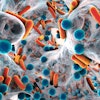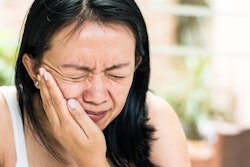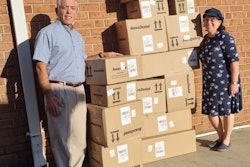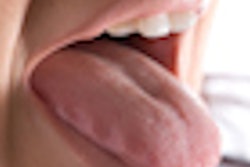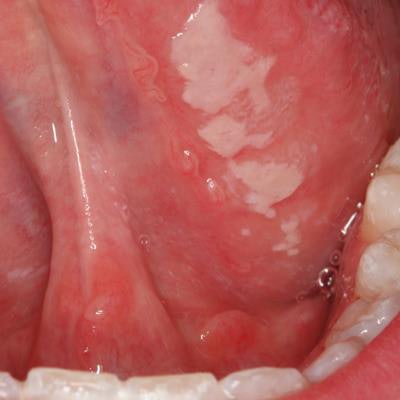
Sores and bleeding gums in the healthy mouths of two teenage siblings may have led to a longtime Maryland dentist diagnosing the first cases of SARS-CoV-2 infection from oral lesions during a routine dental visit.
Dr. Gary Bauman, who has been practicing at the Baltimore Center of Advanced Dentistry in Lutherville for 20 years, said tests confirmed the girls were positive for the virus and tissue samples showed the lesions were not cold sores or any other condition.
"Dentists are in your face," Bauman said. "Patients can't leave masks on while you're treating them. I want this to reach general dental populations, so they can be aware of these lesions."
SARS-CoV-2 and the oral cavity
Small studies have found associations between SARS-CoV-2 and tongue ulcers, mouth rash, lip necrosis, and other oral manifestations. Other evidence has shown that COVID-19 deregulates patients' immune systems, deteriorating their systemic health and possibly causing extended immune imbalances, which may predispose them to late secondary oral lesions.
 Dr. Gary Bauman.
Dr. Gary Bauman.Additionally, early findings have shown that the mouth may be the primary source of novel coronavirus infection and transmission.
The hygienists at Baltimore Center of Advanced Dentistry were alarmed when they saw how much gum bleeding the teens had despite their "exquisite oral hygiene." That coupled with the multiple lesions in the girls' mouths prompted them to call Bauman in right away for his take.
The girls knew they had several sores in their mouths, but they didn't think anything of them. One of the teens got cold sores and shrugged them off. Otherwise, they were asymptomatic.
Bauman admitted he would have likely written off the lesions as common viral sores prior to the pandemic. Some looked like cold sores or ulcers, but others "clearly looked like something else," he added.
He contacted the sisters' parents for permission to perform polymerase chain reaction (PCR) COVID-19 tests on the girls. He routinely performs these tests and gets results back from a lab within 48 hours. The parents agreed and testing was performed, but then they decided they wanted results sooner. The entire family, including the girls, underwent rapid testing. All of them tested positive, and some of the other family members also had oral lesions.
"The lesions were the only sign of COVID-19," Bauman said, regarding the teenagers and most of the other family members. One family member had numerous symptoms.
Samples from the lesions were sent to the lab to ensure they weren't due to herpes or other known viruses. The tests confirmed they weren't, he said.
It's been more than three weeks since the siblings first came to his office. Everyone is recovering, and most lesions disappeared within seven to 10 days.
 Oral lesions detected in the mouths of 15- and 17-year-old female siblings in Maryland. All images courtesy of Dr. Gary Bauman.
Oral lesions detected in the mouths of 15- and 17-year-old female siblings in Maryland. All images courtesy of Dr. Gary Bauman.The future for the findings
Bauman has been in contact with researchers and expects his findings to be published in a few months. However, he wants dentists to have this information now. He wants them not only to be aware of these cases but also to keep a log of them. Dentists from other states have already contacted him about patients with lesions, and he encourages others to reach him at [email protected], he said.
"We have asymptomatic cases out there," Bauman added. "I don't want dentists to let their guards down. Some people are getting vaccinated, but those aren't the ones we need to worry about. The ones who don't know they have it or aren't telling you, those are the ones we should be looking for to prevent the spread."
He also hopes this bolsters the argument that dental teams should be some of the first in line to be vaccinated for COVID-19.
"Dentists can detect COVID-19 lesions with an exam," said Bauman, who has already received the COVID-19 vaccine. "They should have access to the vaccine."



